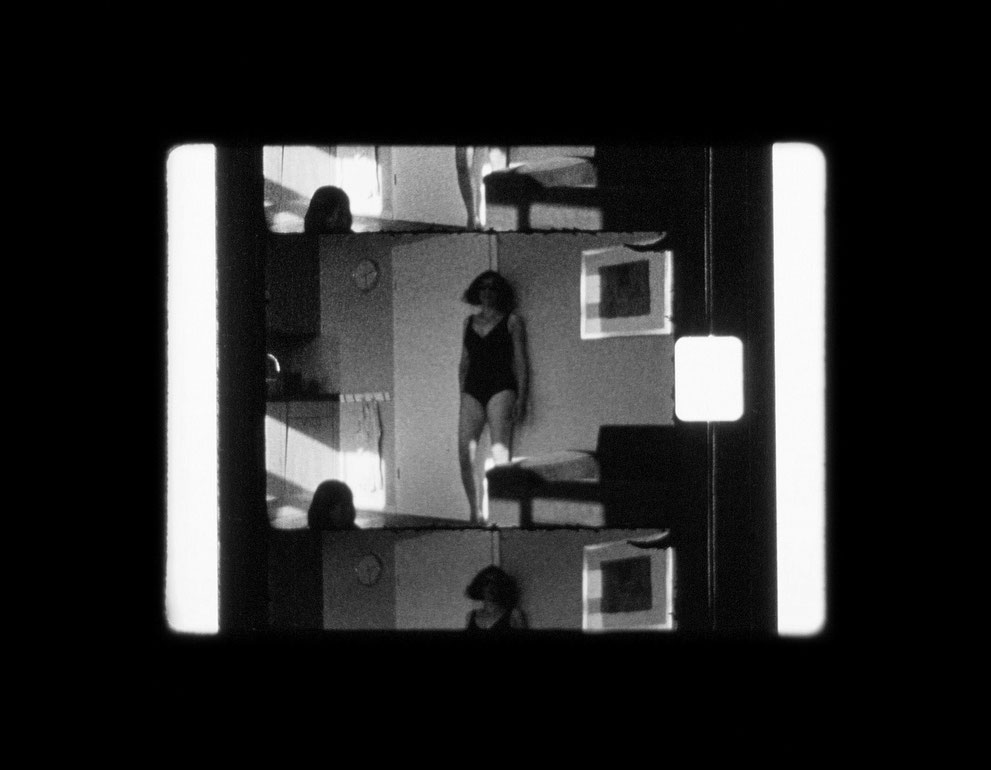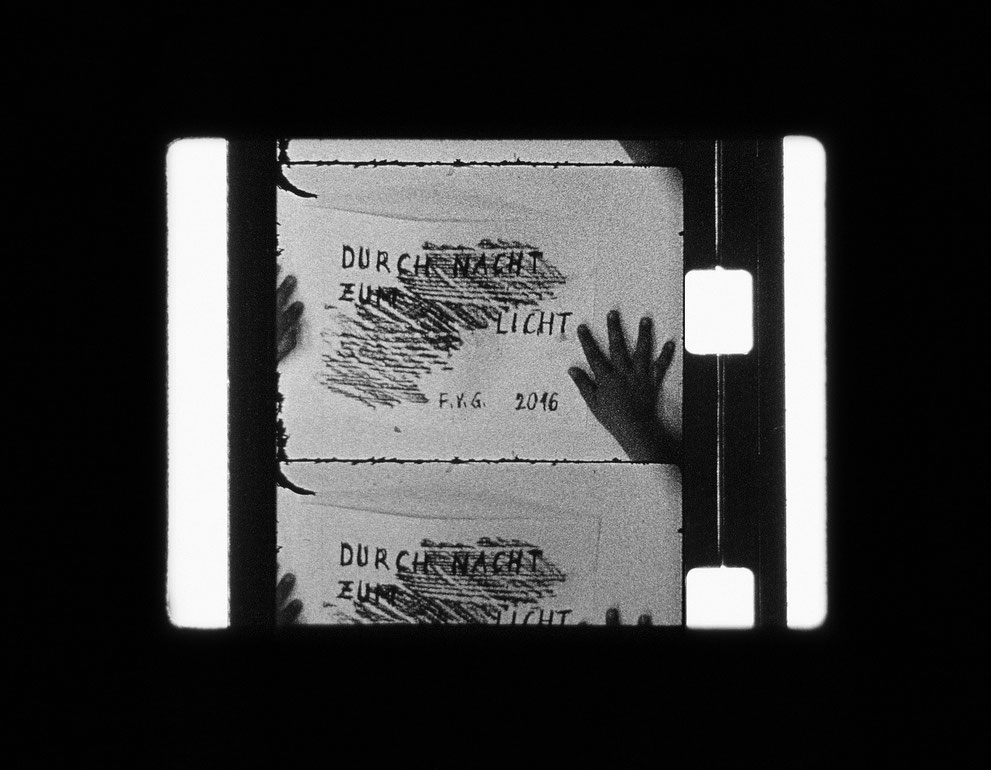By Night to Light
The film welcomes us with an image of an "ideal place": a toy world built by a child. But the idyllic scene is a question of perspective. The city is lifeless, the figures frozen. Without the animating human hands, everything is dead here: we see a cemetery, stone crosses. Black images in between give space to the dark. The night then carries us forth in a dreamy world of thought: including a pig character donning sunglasses. The dark shades veil the view. Here she becomes an object, loses her function, becomes absurd. We look at her like at the lifeless mannequins in the display window.
Across the sea we arrive at another idyllic scene: a living room, in it, a mother and her children. We are right up close to the three. The sunglasses appear again. We view the ocean through them; remembering. But the dark glass changes the view; the image is distorted. The children look into the camera; their gaze, a bit bored, is reminiscent of long, hot summers of the past when days were endless, time eternal. The game goes on, but the mother has become a mere enactment, a mannequin. She stands there lifelessly in her bathing suit, aloof, against the wall; the camera observes her thoroughly. The sunglasses obscure her gaze. All that remains is a body, a figure
The scenes in Friedl vom Gröller´s film are dreamlike: oppressive and childlike, full of erotic symbols and surreal moments. She generates a moving, atmospheric image that puts light and dark, seeing and being seen - that is, life and death - in various contexts. In the end the child tries to wedge a doll in the toy mother´s arms. She isn´t able to. It´s not so easy to construct the ideal site. (Judith Zdesar)
Translation: Lisa Rosenblatt
Durch Nacht zum Licht
2016
Austria, Germany
3 min


